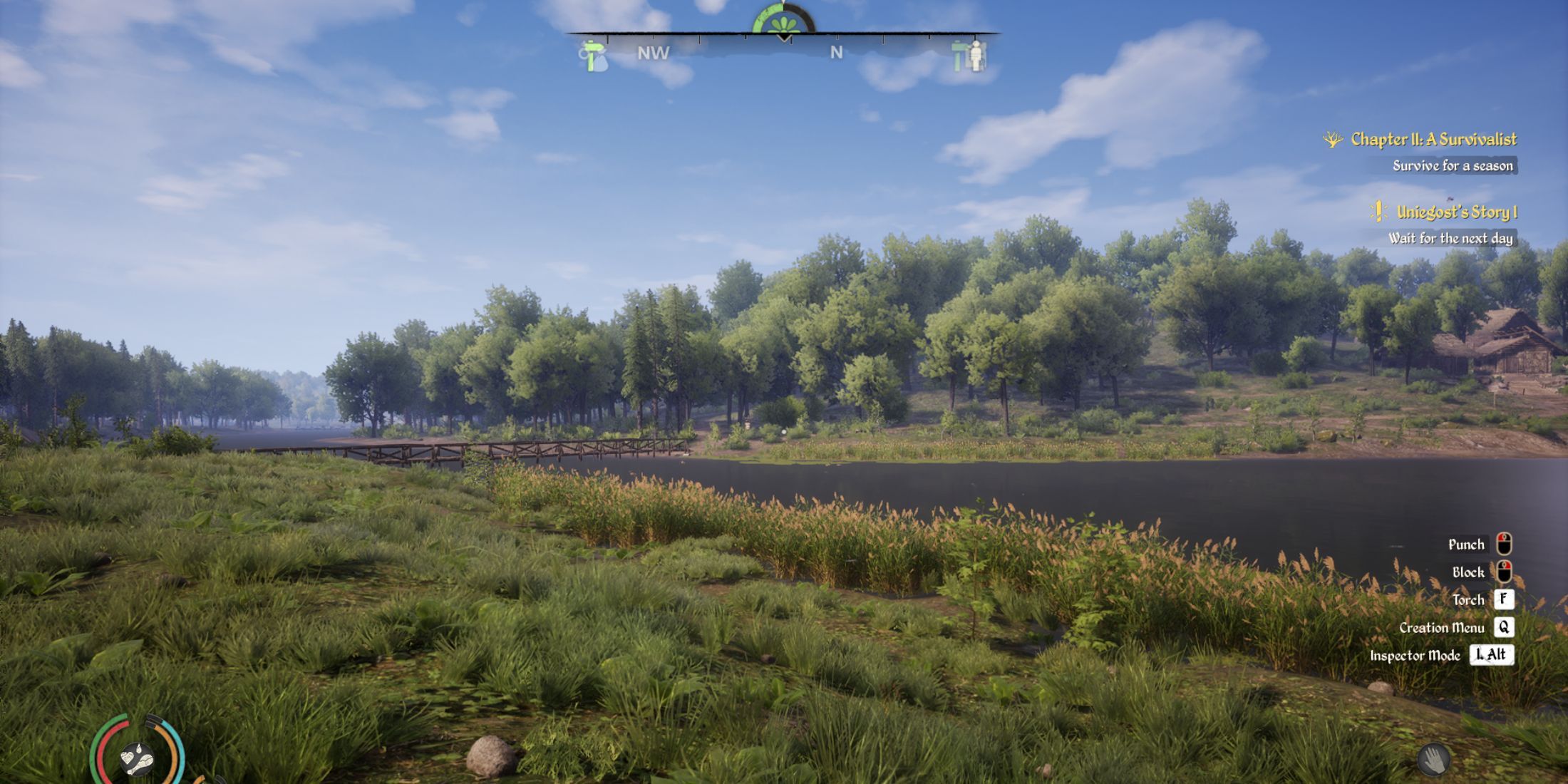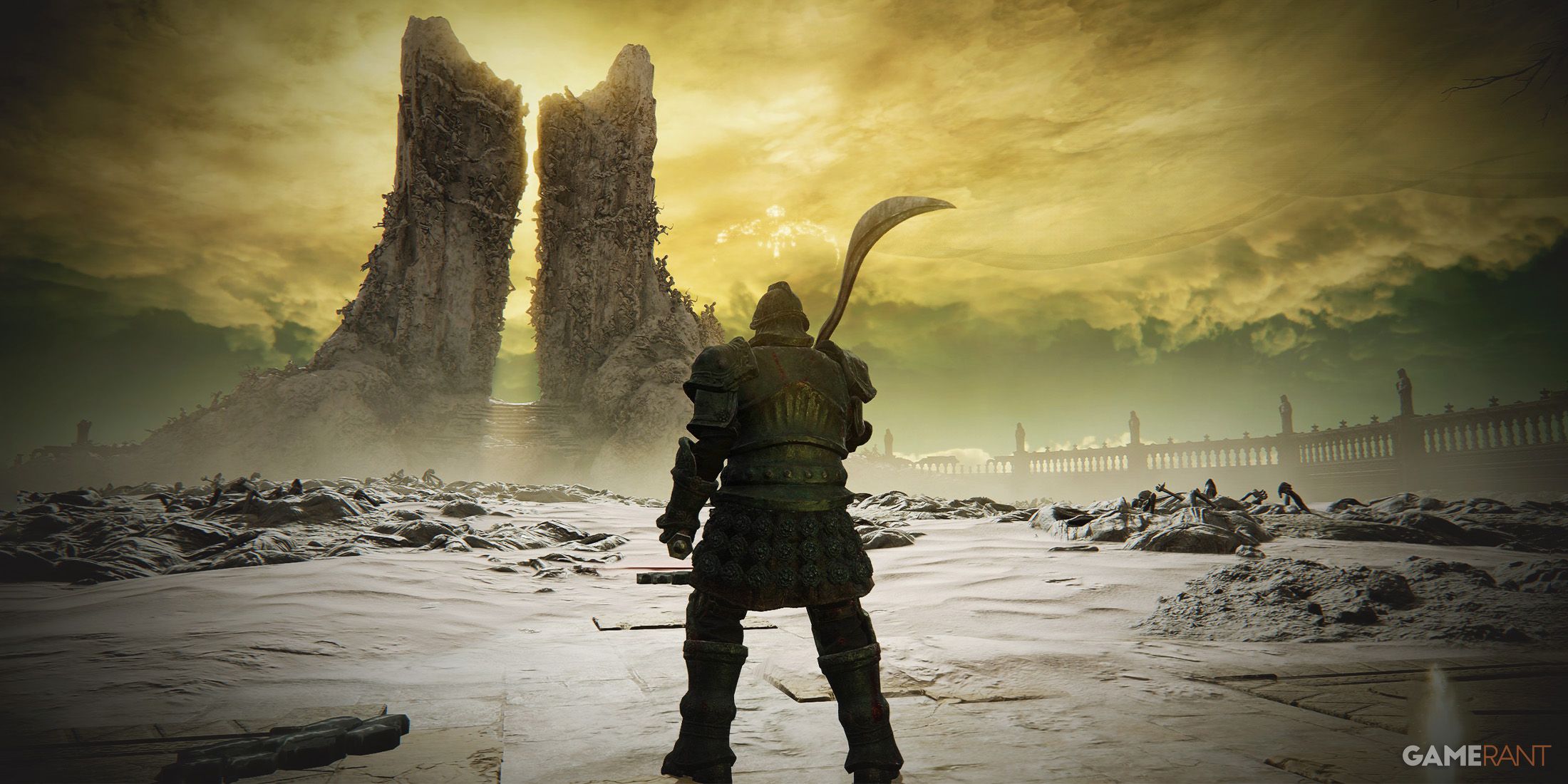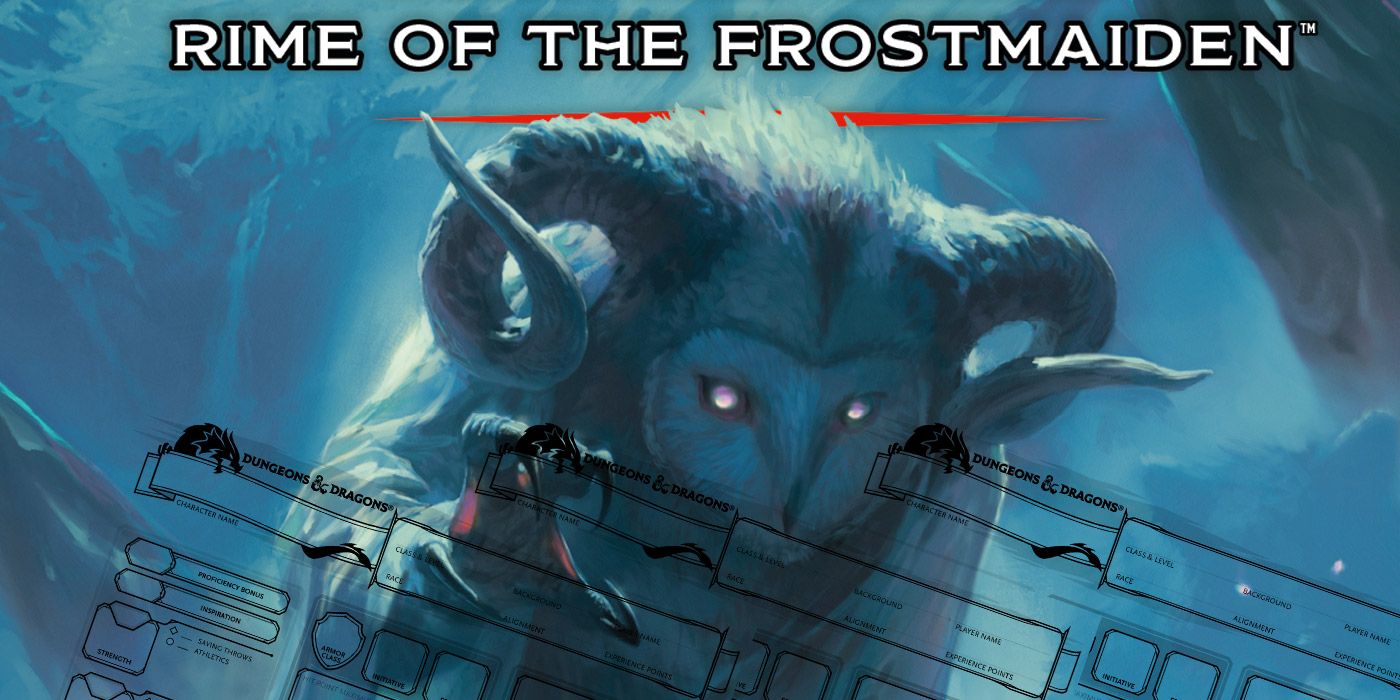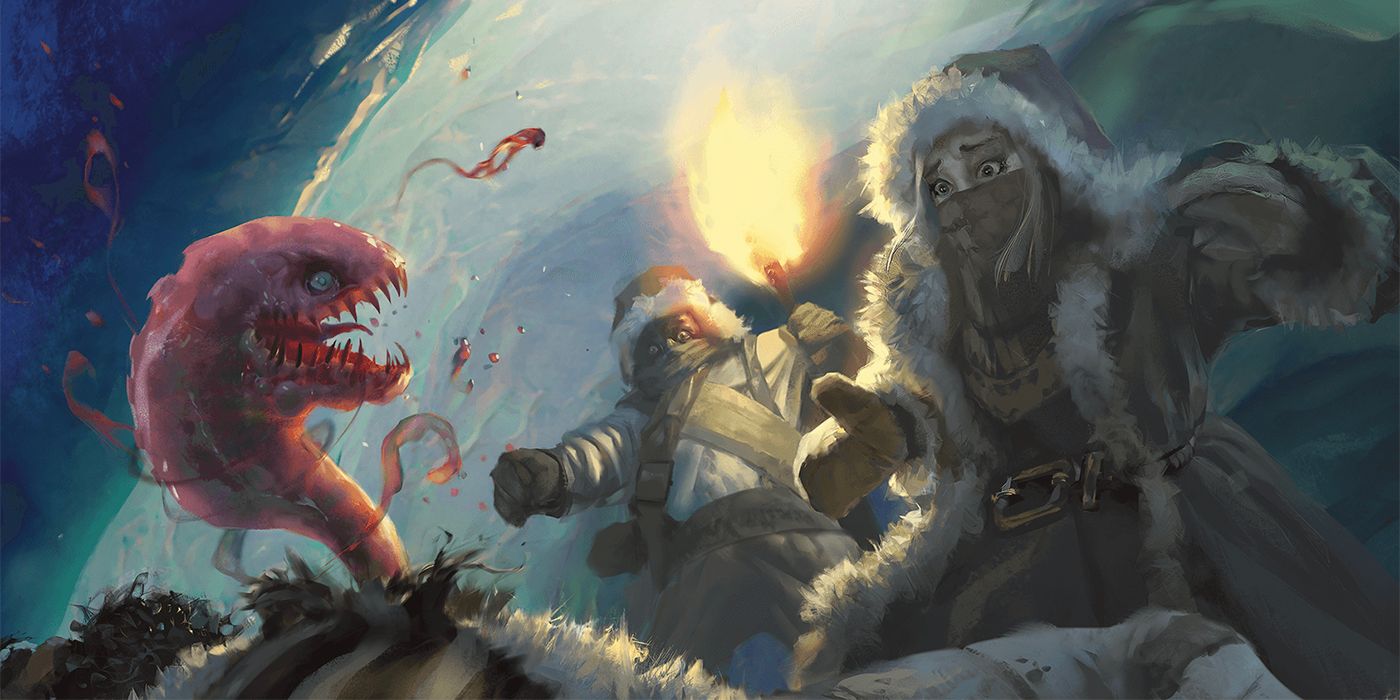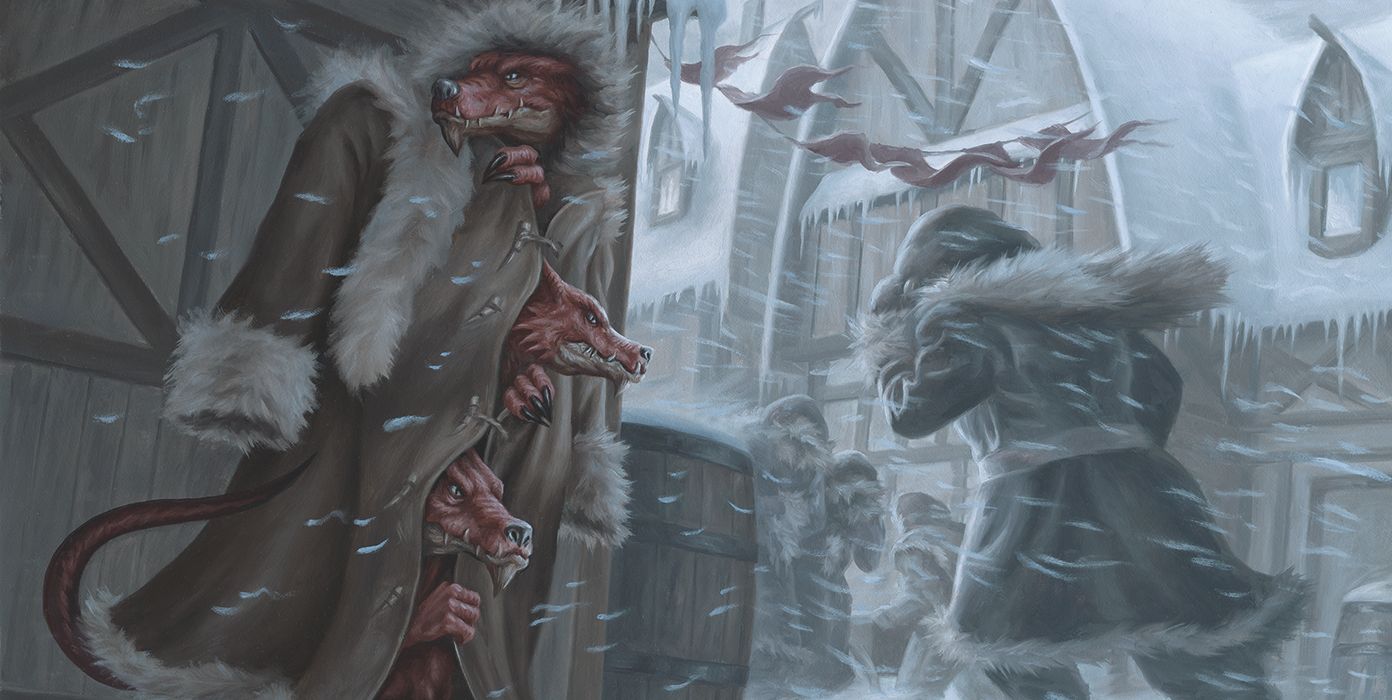Late September is here and the cold is already creeping into the world in some places which means it is time for Dungeons and Dragons players to begin running their Icewind Dale: Rime of the Frostmaiden adventures. This massive new adventure book takes players to the far north of the Forgotten Realms to a region made famous by the Icewind Dale novels featuring Drizzt. This time around Icewind Dale is prepared to being much more horror to tables though...
The adventure is very clearly inspired by modern horror and aims to instill paranoia and distrust amongst party members as they adventure through the northern region and battle monsters, the elements, and a seemingly endless winter. To help drive that spirit of paranoia (which is at least in part inspired by John Carpenter's The Thing) in this Dungeons and Dragons adventure, the character creation chapter includes some new recommendations for dungeon masters to use. The most interesting of these is probably the introduction of Character Secrets.
Depending on what sort of game each player is used to, they may already be familiar with an informal version of this sort of mechanic. After all, it's not uncommon for a DnD character to write a mysterious secret into their backstory that the DM can eventually use to cause drama for the party when a dormant artifact awakes or a mysterious NPC from someone's past shows up in a tavern. The Character Secrets mechanic takes that ideal and adds a bit of Icewind Dale flavor to it by providing a deck full of secrets to randomize and distribute to party members.
One of the Rime of the Frostmaiden appendixes is jam-packed with different secrets that in some way connect to Icewind Dale or the themes in play for this adventure. The suggestion is that the DM randomize all of the possible secrets and then allow players to each select one at random. If a player's first selection doesn't make sense for that character or is just a bad fit, then the player can discard it and select another at random.
Interestingly, some secrets are fairly benign and result in litter more than a particular piece of cloth the player may like to keep on their person at all times. Other secrets are much more impactful and could result in something like an assassin tracking the party through their journey and waiting for the perfect moment to strike against one of the members. This variety adds a lot of dramatic tension and is the perfect way to up the paranoia and keep things tense at the table (as they should be throughout a modern horror-inspired module).
When and if players decide to reveal their secrets to the rest of the party is entirely up to each individual. Hopefully most players will keep the tension alive throughout the early levels of the game, but maybe once the party has grown to know each other better and built up some trust, then a few secrets will work their way out.
"Some players will guard their characters’ secrets for the entire campaign, never sharing them. Other players will wait for the perfect occasion to reveal their characters’ secrets. Don’t be surprised if a player decides to reveal their character’s secret right away."
As an additional tool for the dungeon master, Rime of the Frostmaiden also contains a list of suggested ways that DMs should use a handful of the more dramatic secrets. This is a great tool for busy DMs who like the idea of having player secrets impact a campaign, but might not necessarily have the time to do research and write an extra encounter on their own. The list of suggestions includes timing on when to have the secret impact the campaign and recommendations for what NPC or creature type it may bring into the party's path.
Player secrets may not be right for every party, but they are definitely a fantastic resource for groups that want to play up the mystery, tension, and suspense in this particular adventure. As always, we recommend running a session zero before character creation to help get all players on the same page and allow everyone to share what they are and aren't looking for at the table. This quick discussion gives the DM a chance to set expectations and understand what the party will enjoy most. It ends up being a major time saver in the long run and often helps players make characters that feel more like they are a part of the same world and share a similar tone.
As DMs set out to run Rime of the Frostmaiden, just remember that the adventure module can be treated as a set of recommendations. Do whatever makes sense for your own table and don't sweat it if things go off the rails or head in an unexpected direction. A big part of the fun in DnD is improv, so just embrace the chaos and use character secrets (and every other storytelling device) in whichever way adds the most fun to your own table. For some groups, that will mean adding more horror and distrust amongst the party and for others that will just mean adding more encounters and chances for combat. No two tables are the same, so just pay careful attention to what sort of things add the most fun for the group at hand and run with more of that.
Now that Rime of the Frostmaiden is in the wild, players can start looking forward to the final DnD book of 2020: Tasha's Cauldron of Everything. Tasha's Cauldron will arrive a bit closer to the holiday season, in late November, so that gives players plenty of time to play through Rime of the Frostmaiden while they wait.
Dungeons and Dragons: Icewind Dale Rime of the Frostmaiden releases everywhere on September 15, 2020.

